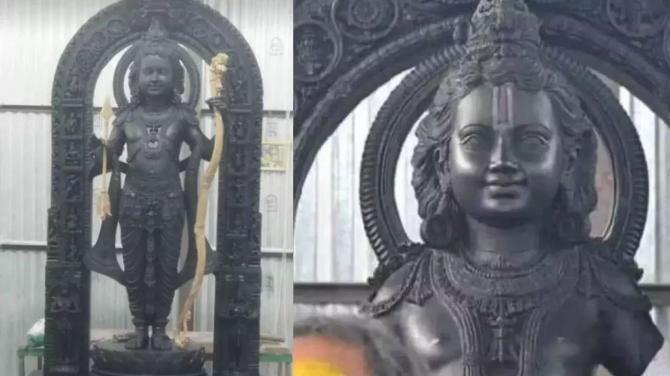Ayodhya Ram Mandir: Architechture To Features, 5 Highlights To Look Out For In India`s Largest Temple
Updated on: 21 January, 2024 10:42 PM IST |Shweta Shah
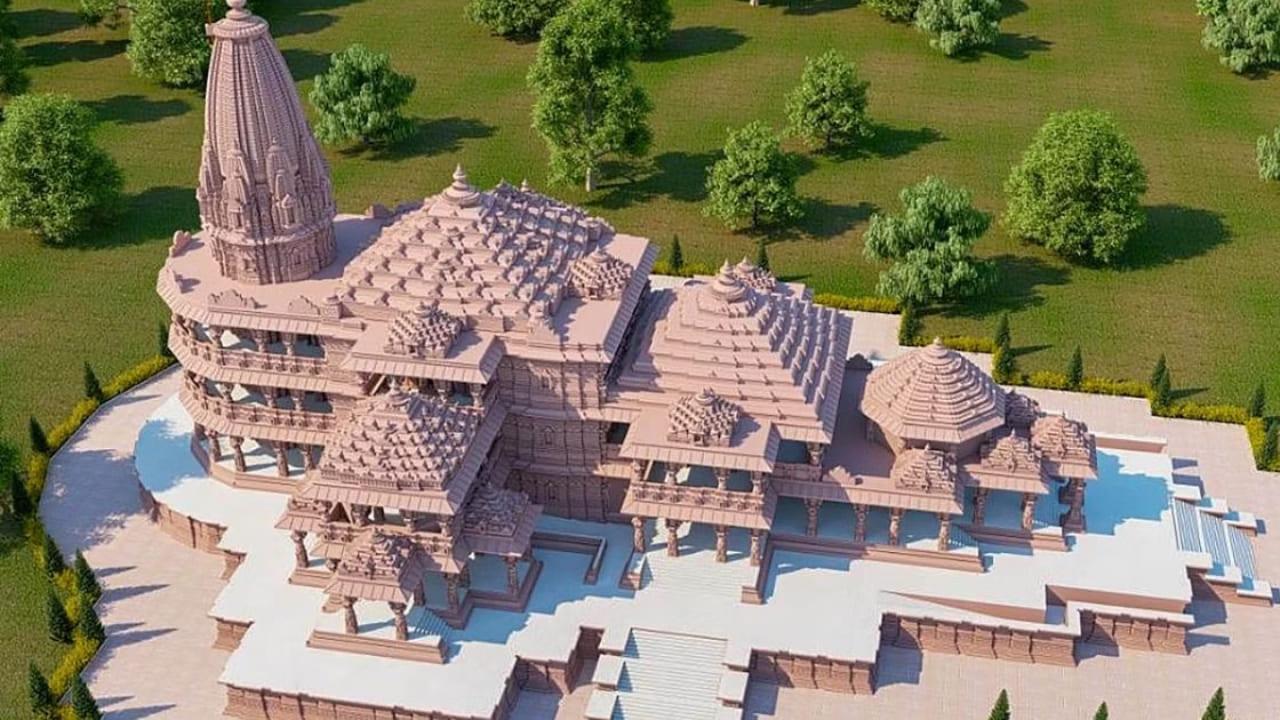
Ayodhya is all set to welcome Lord Ram in a grand manner, with Ram Mandir being inaugurated on January 22. The official holy site to worship Lord Rams janmabhoomi, Ram Mandir, is soon going to be Indias largest temple. As PM Narendra Modi opens the doors to devotees on Monday, lets have a look at five highlights to look out for in the Ayodhya Ram Mandir.
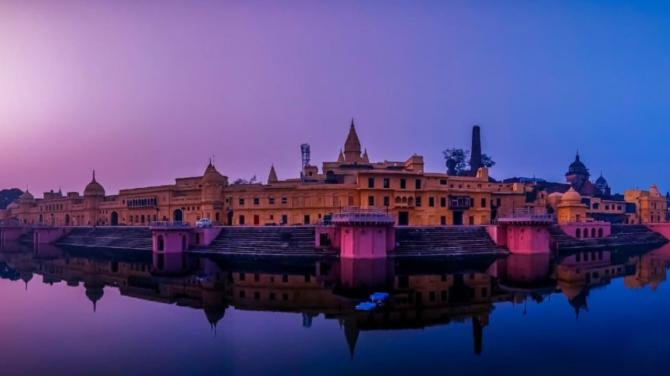
Significance of Ayodhya Ram Mandir
Before we tell you some interesting and jaw-dropping features of the divine site, let's understand the historic significance of Ayodhya Ram Mandir.The Ram Mandir was built on the holy land of Ayodhya, which is believed to be Lord Ram's birth place, or janmabhoomi. According to the Hindu mythology saga Ramayana, the lord was sent on a 14-year journey with his wife, Mata Sita, and brother, Laxman. This was the beginning of the Ramayana, which changed the course of Hinduism in India.
Ram Mandir was initially a temple devoted to Lord Ram, which was demolished by the Mughal emperor Babur. He then formed the infamous Babri Masjid on the same piece of land.
After many appeals, fights, and petitions to rebuild the Ram Mandir, the Supreme Court delivered the historic verdit in 2019, thus paving the way to construct the temple in Ayodhya.
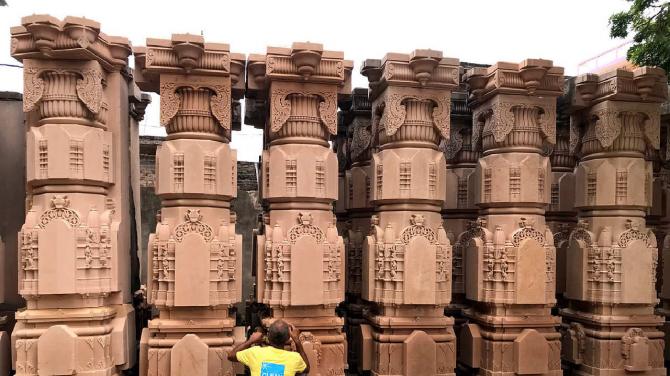
1. Ayodhya Ram Mandir: India's largest tenple
As per Shri Ram Janmabhoomi Teerth Kshetra, Ram Mandir is going to be India's largest temple. It is constructed in traditional Nagar style and has a length (east to west) of 380 feet, a width of 250 feet, and a height of 161 feet.The temple is spread across 28,000 square feet. The entry to Ram Mandir is from the east, and devotees will have to climb 32 stairs through Singh Dwar. The trust also mentioned there are going to be lifts and ramps for the convenience of the differently abled and senior citizens.
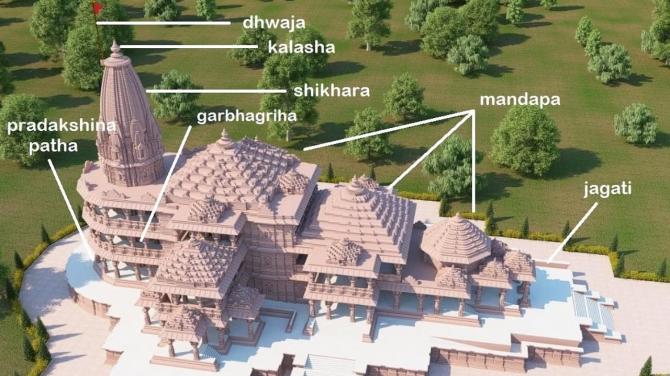
2. Ayodhya Ram Mandir: The architecture
As per reports, the renowned Sompura family is the brains behind the architecture of Ram Mandir. The family has built over 100 temples worldwide and will continue their legacy with the Ayodhya temple.The chief architect, Chandrakant Sompura, and his sons, Ashish and Nikhil, have designed the entire architecture of the temple. As a matter of fact, no iron or steel was used to build the entire temple. The Ram Mandir is built using bricks.
The trust on X (formerly known as Twitter) said the temple is three stories, each 20 feet tall. It has 389 pillars and 44 doors. There are five mandaps in the temple, namely the Nritya Mandap, Rang Mandap, Sabha Mandap, Prarthna Mandap, and Kirtan Mandap.
With three floors and 12 gates, the Ayodhya Ram Mandir stands as a magnificent testament to architectural grandeur.
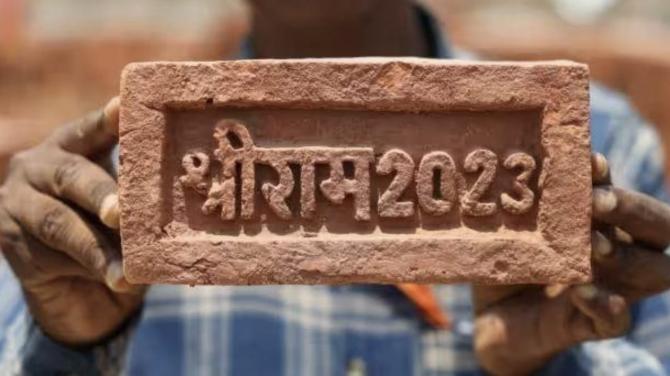
3. Ayodhya Ram Mandir: Shri Ram on bricks
Another interesting highlight is the brick used to construct the Ram Janmabhoomi Temple. It bears the sacred inscription 'Shri Ram', thus reminding us of the popular incident from the Ramayana while building Ram Setu.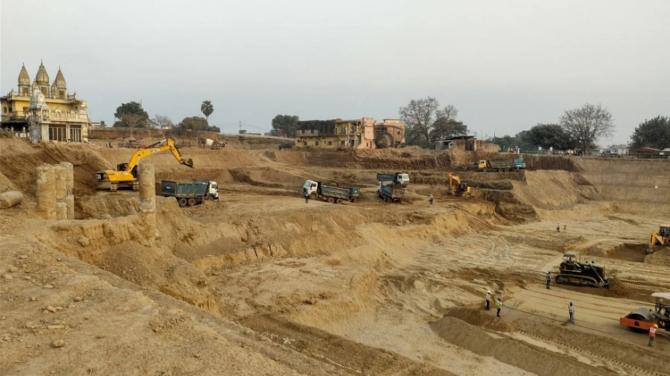
4. Ayodhya Ram Mandir: The sacred soil
The foundation of the historic Ram Mandir holds spiritual significance, as soil from 2587 was bought to build it. Some of the places include Jhansi, Bithoori, Haldighati, Yamunotri, Chittorgarh, and the Golden Temple, among other holy sites.In addition to this, soil from Thailand has also been sent for the Ram Lalla idol consecration ceremony as a gesture of strengthening international ties.
